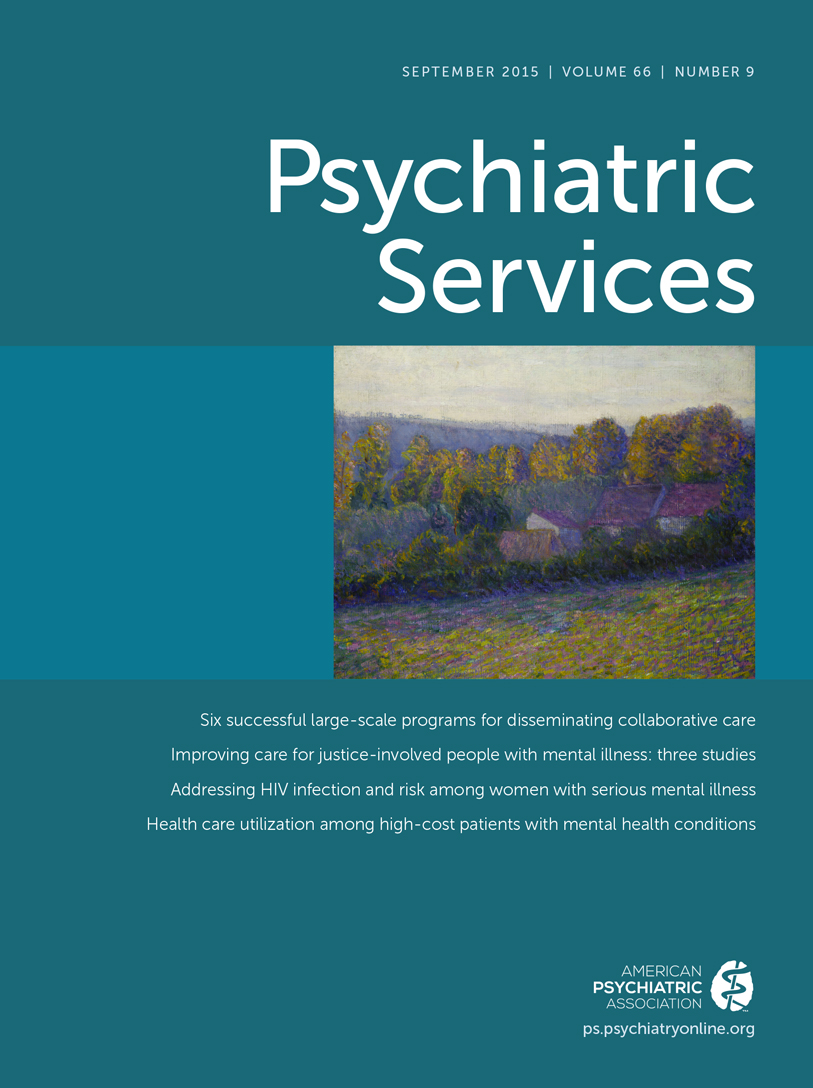This Month’s Highlights
Focus on Justice System Involvement
Three reports in this issue focus on people with mental illness who become involved in the criminal justice system. Two perspectives inform efforts to improve the justice system’s responses to this population: public health, which is concerned with reducing symptoms and improving functioning, and public safety, which aims to reduce criminal recidivism. Diversion programs, grounded in the former, provide treatment instead of jail time and have been widely disseminated. However, as Jennifer L. Skeem, Ph.D., and colleagues note in this month’s lead article, a new policy emphasizes correctional treatment services to prevent offenders from committing new crimes. The authors describe the risk-need-responsivity (RNR) model of correctional assessment and treatment, which was developed with general offenders and underpins the new policy. As the RNR model gains favor, mainstream mental health services for this population are deemphasized. Will the new approach better serve people with mental illness in the justice system? Dr. Skeem and colleagues undertook a literature review to evaluate empirical support for following the RNR model with this population and to pose major questions for the field (page Original article: 916). In an outcomes study of 234 mental health court (MHC) participants, Erin Comartin, Ph.D., and colleagues found no significant differences by diagnostic group—bipolar disorder, depressive disorder, schizophrenia, and “other.” The authors hope that their findings will alleviate the need for MHCs to restrict eligibility based on diagnosis (page Original article: 923). In the Economic Grand Rounds column, Allison G. Robertson, Ph.D., M.P.H., and coauthors present an analysis showing how justice involvement increased the costs of public treatment in a sample of more than 25,000 people with serious mental illness (page Original article: 907). In Taking Issue, Mark R. Munetz, M.D., and Natalie Bonfine, Ph.D., note that it is time for the mental health and criminal justice systems to go beyond traditional “boundary spanning” in their collaborations and develop “deep partnerships” built on a shared mission that incorporates the values of public safety and public health (page Original article: 901).
Suicide Among Veterans, 2000–2010
Evidence of a suicide epidemic among U.S. subgroups is mounting, and suicide among military veterans has become a national concern. An analysis of 2000–2010 data for more than 170,000 suicide decedents found that suicide rates among veterans increased by about 25%, compared with an increase of approximately 12% among nonveterans. By calculating annual standardized mortality ratios and controlling for age and gender differences, Claire A. Hoffmire, Ph.D., and colleagues determined that the number of veteran suicides was approximately 20% higher than expected in 2000 and 60% higher in 2010. The elevated risk for female veterans in 2010 was nearly four times higher than for male veterans. An important finding was that relative and absolute suicide rates declined over the study period among veterans who used Veterans Health Administration services (page Original article: 959).
HIV and Women With Serious Mental Illness
Rates of HIV infection are at least four times higher among persons with mental illness than in the general population. To determine how clinicians can best prevent and treat HIV infection among women with serious mental illness, an especially vulnerable group, Mary V. Seeman, M.D.C.M., reviewed 82 relevant articles. She found evidence that combining several approaches is more effective than reliance on a single modality and that mental health care providers are in a position to facilitate multiple approaches. Frank discussion of how HIV is transmitted and of personal strategies for reducing sexual risk are key elements in prevention, as are psychoeducation, antipsychotic adherence, prevention of domestic violence and homelessness, disbursement of financial entitlements, and provision of social support and cognitive rehabilitation. For HIV-positive women, comprehensive measures include prompt HIV treatment, long-term retention in care, supervision of medication adherence, and rapid management of substance use disorders and other comorbidities (page Original article: 966).
Large-Scale Dissemination of Collaborative Care
The first positive findings from effectiveness trials of collaborative care were published in the early 1990s, and subsequent research has provided strong support for this approach to the treatment of common mental illnesses. In this month’s Integrated Care column, David J. Katzelnick, M.D., and Mark D. Williams, M.D., ask, “With such strong evidence of effectiveness, why isn’t collaborative care viewed as usual practice?” To address the issue, they turn to the science of dissemination, which investigates how innovations are adopted and which has developed strategies, such as learning collaboratives, to overcome dissemination barriers. They then describe six programs that have adapted evidence-based models in real-world settings for ongoing collaborative care of patients. Each includes use of a registry, stepped care, and a team-based approach (page Original article: 904).



